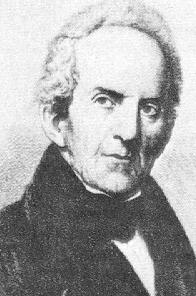Smith Thompson was born in 1768 to a wealthy speculator and state politician. Upon graduation from Princeton in 1788, Thompson taught school for several months. At the New York convention in 1788, although strongly outspoken in opposition of the new federal constitution, Thompson eventually voted for ratification. He then began his legal education as a clerk in the firm of Gilbert Livingston and James Kent. In a letter Kent described Thompson as “a plain, modest, humble, ignorant young man with narrow views and anti-federal politics. His mind did not expand and his principles became liberal very slowly.” Kent’s opinion was likely biased by the fact that in 1793 Thompson succeeded him as Livingston’s partner, and the following year married his daughter, Sarah Livingston. Livingston was friends with powerful Jeffersonian politicians in New York, which likely contributed to Thompson’s quick political success.
While serving a term in the state legislator in 1802, Thompson was offered and accepted a seat on the New York Supreme Court. In 1807, Thompson declined an appointment as Mayor of New York, likely because he felt more secure in his lifetime tenure position on the court. He remained politically ambitious though out his career. He also remained close with Martin Van Buren, as evidenced by their heavy correspondence and the name of Van Buren’s fourth son, Smith Thompson Van Buren.
Thompson kept his seat on the New York Supreme Court until President James Monroe named him Secretary of the Navy in 1818. He held the post until 1823, when he was appointed to the U.S. Supreme Court. While on the Supreme Court, Thompson remained active in politics. In 1828, he unsuccessfully ran for Governor of New York. Although a member of the Marshall Court, Thompson’s anti-federalist views often made him a dissenter. Thompson remained on the Supreme Court until his death in 1843.
It was in 1839 that Thompson presided over the Circuit Court trial in the Amistad case. He made two primary rulings in the case. He first decided that no American court had jurisdiction over the criminal charges of murder and mutiny because such acts had been committed on a Spanish ship in Spanish waters. They then ruled that the District court of Connecticut would have to decide all of the competing claims, including whether the Amistad captives were property. Had Thompson granted District Attorney Holabird’s request that the captives be turned over to President Van Buren, the case likely would have ended immediately as the President was prepared to turn the captives over to Spain or return them to Africa. When the case finally reached the Supreme Court in 1841, Thompson joined Story's majority opinion.

